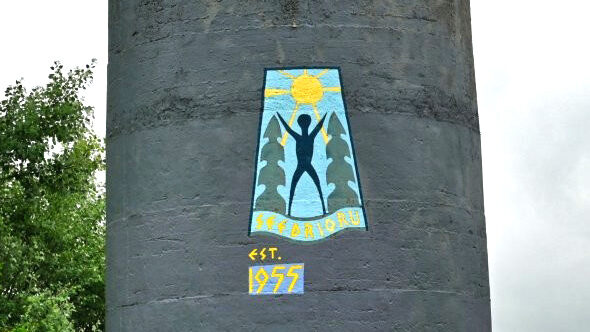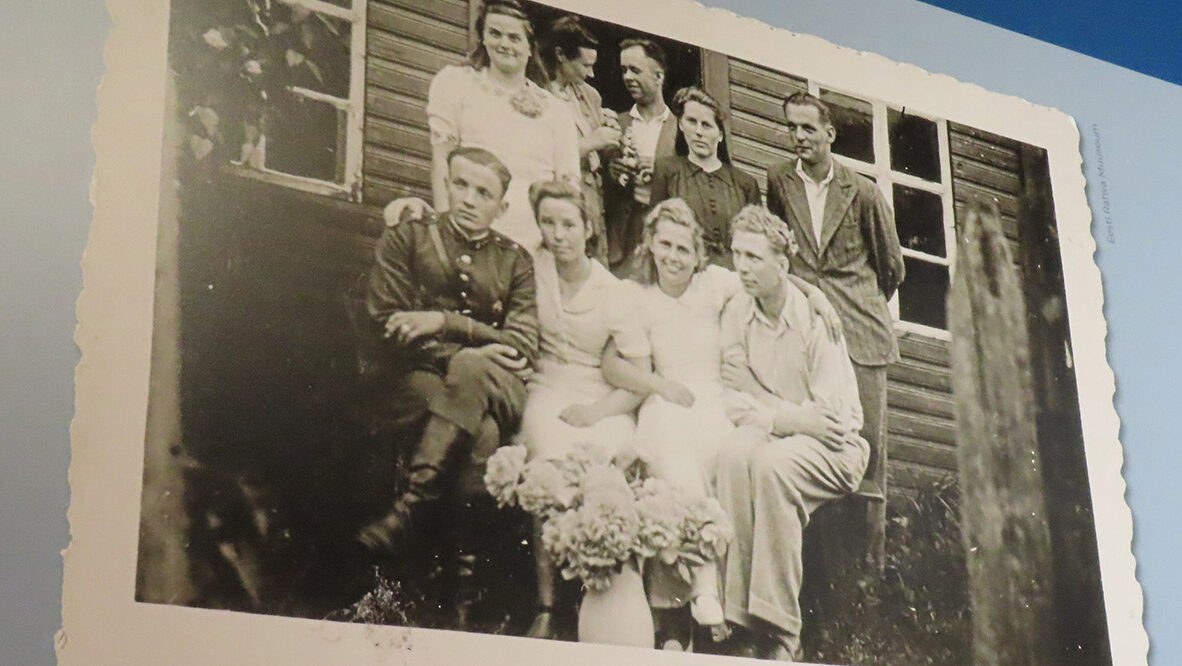Who knows how many Estonian kids have tossed and turned in bed after watching it, with nightmares of ghoulish foot soldiers and dissonant, cavernous singing!
As the story goes, Suur Tõll is a humble giant who lives with his comparably large and strong wife Piret. Tõll is both a farmer and the King of his island, Saaremaa. This existence suits him well, except for when his archenemy, Vanapagan (literally “Old Devil”) makes a nuisance in Tõll's fields. When word comes to him of approaching invaders, he fetches some cabbage to make soup for himself and the local soldiers before they go to battle. Tõll stomps in, trouncing enemy forces with two big wheels he takes from a cart.
While away fighting, Vanapagan sneaks over to attack Piret and demolish their home. When Tõll returns and discovers Piret's corpse, he chases around Vanapagan to claim his revenge. His fury mounts to its highest point when, on top of losing Piret, Saaremaa is invaded once more. Tõll returns to fight another army, but this time, he encounters a giant like him, who cuts his head off in a moment of distraction. Tõll and the soldiers of Saaremaa do finally defeat the invaders, but Tõll takes his head and hides away, only to return if the islanders need his help.
This animation was a production of Joonisfilm, originally founded in 1971 by Rein Raamat as part of the famous Tallinnfilm studio that created so many of Estonia's films from the 20th century.
Raamat has directed 14 cartoons, including Rüblik (1975), about a boy who is transformed into a pig when he aggravates a groundskeeper, by not walking on the sidewalk on the way to and from school. Raamat's artistic hand is also in documentaries and films, including the 1969 cult classic Viimne reliikvia(“The Last Relic”).
From a cinematic standpoint, some of these animations' memorable qualities include their music and sound design, with creepy howling and bellowing from choral voices. There's also the way faces of characters are exaggerated in animation, like when characters are comically fumbling through manual tasks. The animation of Suur Tõll puts an absurdist angle on the folk tale, to the point where violence almost loses impact, like in comic books. The animation's artistic style, created by Jüri Arrak, of Suur Tõll as a wavy-headed being with an unnerving stare, is seared into the larger Estonian memory.
Outside of the animation, Suur Tõll epitomizes Estonianness with his fondness for cabbage, beer, and blistering hot rocks for his sauna. His national image was made physical by Tauno Kangro's statue of Tõll and Piret carrying a boat full of fish, situated by the marina in Kuressaare.
In the northwest Saaremaa town of Ninase, there are two windmills, rebuilt in the late 1970s, that are meant to pay tribute to Tõll and Piret. Local newlyweds take part in a tradition of writing their date of marriage and names onto rocks and bringing them to the windmills for good luck.
As an Estonian folk tale, Kalevipoeg (“Kalev's Son”) gets more attention, probably because it's more oriented to all of Estonia rather than just one region. Its notoriety is also reinforced by the popularity of the Finnish Kalevala, that has similarities to Kalevipoeg and has become known outside of the region.
Tõll and Kalevipoeg are similar in that they both meet their final end through a loss of some appendage. That is the ultimate devastating blow for any Estonian giant. Kalevipoeg loses his feet; for Tõll it's his head. They are both guardians of their lands. Suur Tõll saves mariners at sea and defends Saaremaa. Kalevipoeg fought off villains by jettisoning rocks and swinging planks at them. Paul Bunyan is something of a North American equivalent, with his legendary lumberjack feats.
Consider also, in the modern story context, how the main character of Jon Favreau's Star Wars miniseries The Mandalorian, has become so popular. People are obsessed with stories of guardians and warriors with good hearts. People appreciate good overcoming evil.
Deep down, the legend of Suur Tõll is a familiar human dream. A wish that, when the need arises, we can call out for a hero to come in and help us. Even if it's locked away in a myth or legend.
This article was written by Vincent Teetsov as part of the Local Journalism Initiative.




